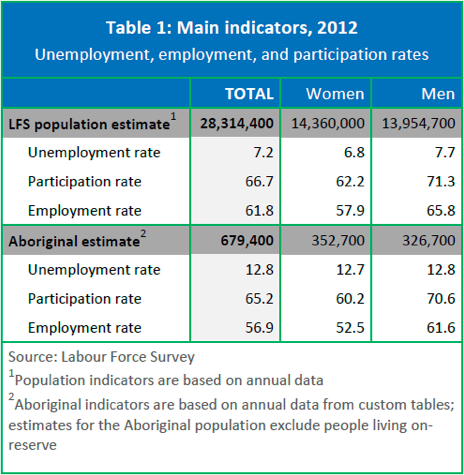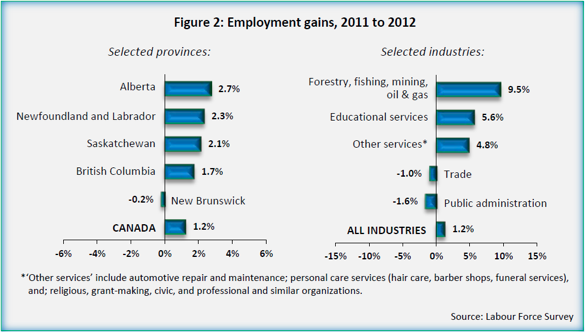Aboriginal Employment Data

The unemployment rate of Aboriginal people has remained virtually unchanged between 2011 and 2012. However, the participation and employment rates each grew by 1.1 percentage points during that time. Showing an increase in those Aboriginal people looking for and wanting to work.
Across Canada there is a trend towards under-utilizing Aboriginal talent. Specifically in the mining industry, Aboriginal peoples are mainly employed in labour and support roles. Our industry and education partnerships look to provide advanced education opportunities for local Aboriginal communities. This has the potential to ease the pressures that employers will feel in sourcing critical talent for physical, engineering science and technician roles.
Canada Wide Comparison
Canada saw an overall employment gain of 1.2% (+201,500 jobs) between 2011 and 2012. Ontario and Quebec experienced lower proportional increases; however, this still translated into more than 80,000 jobs added in those provinces. Mining, oil and gas were included in the sector to see the largest growth of 9.5% from 2011 to 2012.
Aboriginal peoples are an important source of talent for these growing sectors. By proactively providing training to these local communities we look to increase the potential of future employment. Also keeping the local communities interested in the opportunities to come.
Sources
“Aboriginal Labour Market Bulletin.” Aboriginal Skills and Employment Training Strategy 2.2 (2013): n. pag. Human Resources and Skills Development Canada. Web.


